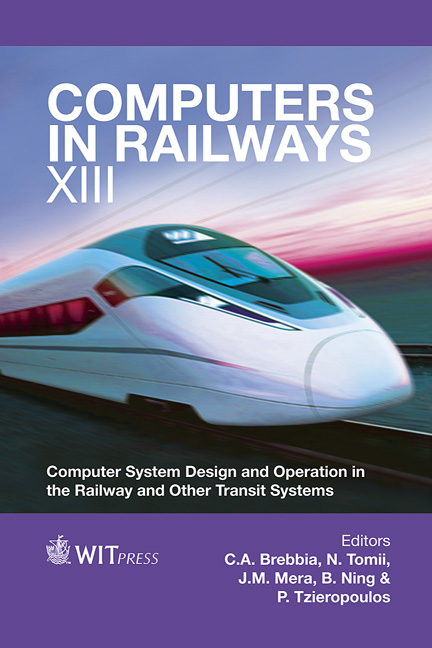Newly Developed Simple Railway Timetable Evaluation Program Sujic With The New Model To Deal With Re-scheduling
Price
Free (open access)
Transaction
Volume
127
Pages
8
Page Range
513 - 520
Published
2012
Size
2,643 kb
Paper DOI
10.2495/CR120431
Copyright
WIT Press
Author(s)
R. Takagi
Abstract
Many attempts have been made in recent years to automate fully the task of generating railway timetables, mainly by using one of the numerical optimisation techniques. Virtually all of these attempts depend on some kind of technique to evaluate the timetable. Upon evaluation of a railway timetable, it is important to take into account the passengers’ points of view, including the disbenefit (inconvenience) for any single passenger during his/her entire journey on the railway. As one of such evaluators, Sujic was first developed in 1988, and rewritten in 1996, at the research group at the University of Tokyo, and has since been used by many researchers in a number of universities in Tokyo. However, this program is slow and memory-eating because of its poor implementation of path search algorithms. Also, the program has no capability to deal with rescheduling. The standard Dijkstra’s algorithm could not be used by the old Sujic program because of the path search criteria. In the new Sujic, the author applied the slightly modified Dijkstra’s algorithm and drastically improved the efficiency of the search without changing the criteria, the efficiency of the search has drastically improved. The evaluation of train re-scheduling is slightly different from that of scheduling because the arrival and departure times of trains that passengers expect (which is the scheduled times) are different from the actual arrival and departure times under re-scheduling. Although evaluation can be performed by simply providing old Sujic with the actual timetables, it yields a result in which passengers act as if they \“expect” that an accident will happen in the future. In the new version, this problem is addressed by adding the functionality to use multiple schedules in one evaluation.
Keywords
optimization, simulation, passenger activity, train timetabling, re-scheduling, electric railway





